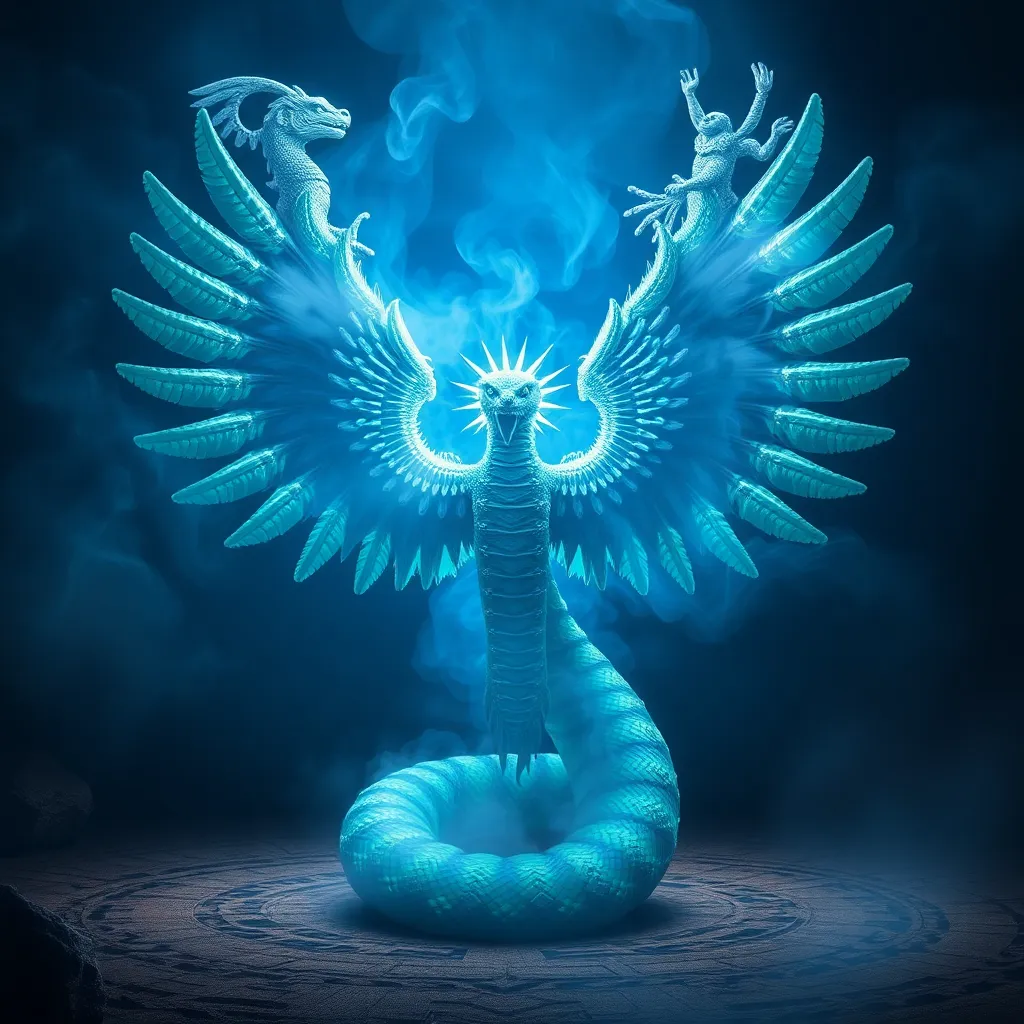Quetzalcoatl and the Role of the Priest: The Feathered Serpent as a Divine Guide for Ritual Leaders
I. Introduction
Quetzalcoatl, known as the Feathered Serpent, stands as one of the most important deities in Mesoamerican mythology. Revered across various cultures, including the Aztec, Toltec, and Maya, Quetzalcoatl symbolizes wisdom, life, and the arts. His significance transcends mere mythology, influencing the very fabric of ancient Mesoamerican societies.
The priesthood in these ancient cultures played a crucial role, acting as intermediaries between the divine and the earthly realm. They were responsible for conducting rituals, maintaining social order, and ensuring the favor of the gods. This article explores the intricate relationship between Quetzalcoatl and the priesthood, illustrating how this deity served as a divine guide for ritual leaders and shaped their practices.
II. Historical Context of Quetzalcoatl
The origins of Quetzalcoatl can be traced back to the early Mesoamerican civilizations, where he was often depicted as a serpent adorned with feathers, symbolizing the connection between the earth and the sky. His worship varied significantly across different cultures:
- Aztec Civilization: In the Aztec tradition, Quetzalcoatl was associated with the wind, learning, and the morning star, often depicted as a priestly figure.
- Toltec Civilization: The Toltecs viewed Quetzalcoatl as a cultural hero, credited with the creation of mankind and the introduction of agriculture.
- Maya Civilization: In Maya mythology, Quetzalcoatl was linked to the god Kukulkan, representing wind, rain, and life-giving properties.
Across these civilizations, Quetzalcoatl was imbued with various attributes, including wisdom, fertility, and a deep connection to the arts. His mythological significance made him a cornerstone of Mesoamerican spirituality.
III. The Role of the Priest in Mesoamerican Society
The priestly class in ancient Mesoamerican societies was pivotal in maintaining the cultural and spiritual integrity of their communities. The roles and functions of priests included:
- Conducting rituals and ceremonies to appease the gods.
- Serving as advisors to rulers and leaders.
- Educating the youth in religious and cultural traditions.
- Interpreting omens and prophecies for the community.
Priests maintained a close relationship with the community, acting as spiritual leaders and mediators. Their responsibilities extended beyond the temple, as they were often involved in societal governance and decision-making processes.
IV. Quetzalcoatl as a Divine Archetype for Priests
Quetzalcoatl served as a powerful archetype for priests, representing qualities that they aspired to embody. His symbolism as a guide and mentor was central to the priesthood’s identity:
- Wisdom: Priests sought to emulate Quetzalcoatl’s wisdom in their teachings and decisions.
- Compassion: Quetzalcoatl was known for his benevolence, encouraging priests to care for their communities.
- Integrity: The Feathered Serpent’s teachings emphasized moral conduct, which priests were expected to uphold.
The connection between Quetzalcoatl’s teachings and priestly duties was profound, as priests integrated his moral framework into their rituals and community interactions.
V. Rituals and Ceremonies Involving Quetzalcoatl
Rituals dedicated to Quetzalcoatl were vital for maintaining the favor of the gods and ensuring societal well-being. Key rituals included:
- Feast of Quetzalcoatl: An elaborate celebration involving music, dance, and offerings to honor the deity.
- Rituals of Renewal: Ceremonies aimed at agricultural renewal, invoking Quetzalcoatl’s blessings for fertility and growth.
- Initiation Rites: Priests underwent initiation rituals that often included invoking Quetzalcoatl for guidance and strength.
Priests played a critical role in conducting these ceremonies, ensuring that the rituals adhered to traditional practices and were performed with the utmost reverence. These rituals were not only acts of devotion but also served to reinforce social order and community cohesion.
VI. Quetzalcoatl’s Influence on Priesthood Practices
Quetzalcoatl’s teachings and symbolism significantly influenced the moral and ethical framework for priests:
- Moral Framework: His emphasis on integrity and compassion guided priests in their conduct and decision-making.
- Symbolism in Attire: Priests often wore garments adorned with imagery of Quetzalcoatl, signifying their spiritual connection to the deity.
- Notable Priests: Figures such as Tlaloc’s priests incorporated Quetzalcoatl’s teachings into their practices, furthering his influence.
Through these practices, Quetzalcoatl’s legacy was woven into the very essence of priestly duties, shaping the spiritual landscape of Mesoamerican cultures.
VII. The Legacy of Quetzalcoatl and the Priesthood
The enduring influence of Quetzalcoatl can still be felt in contemporary spirituality and culture. His teachings continue to inspire various spiritual movements and practices:
- Modern Spirituality: Quetzalcoatl is often invoked in modern spiritual practices that emphasize harmony with nature and community.
- Post-Conquest Transformation: The roles of priests transformed after the Spanish conquest, yet the essence of Quetzalcoatl’s teachings persisted.
- Reinterpretation: Contemporary interpretations of Quetzalcoatl explore themes of identity, cultural resilience, and environmental stewardship.
These legacies highlight the adaptability of Quetzalcoatl’s influence, showing how ancient beliefs can evolve and resonate in modern contexts.
VIII. Conclusion
Quetzalcoatl’s significance as a divine guide for ritual leaders is profound and multifaceted. His teachings shaped the practices of priests, providing a moral and ethical framework that guided their interactions with the community and the divine. The rituals dedicated to Quetzalcoatl not only reinforced social order but also cultivated a deep spiritual connection among the people. As we reflect on the legacy of Quetzalcoatl, it becomes clear that his influence transcends time, continuing to inspire and guide spiritual leaders in contemporary society.




